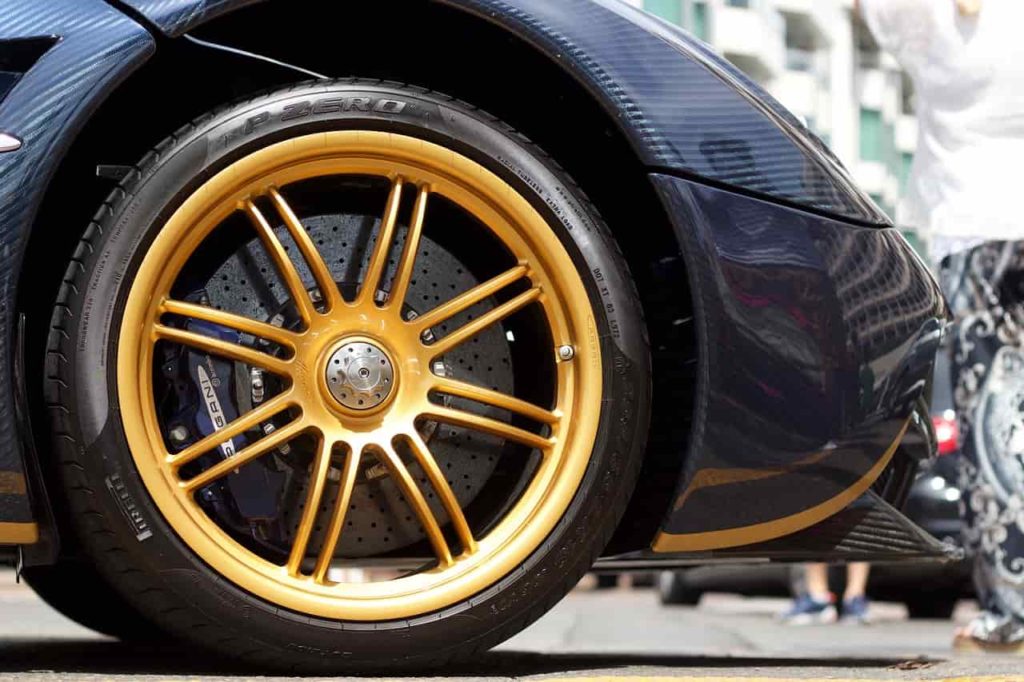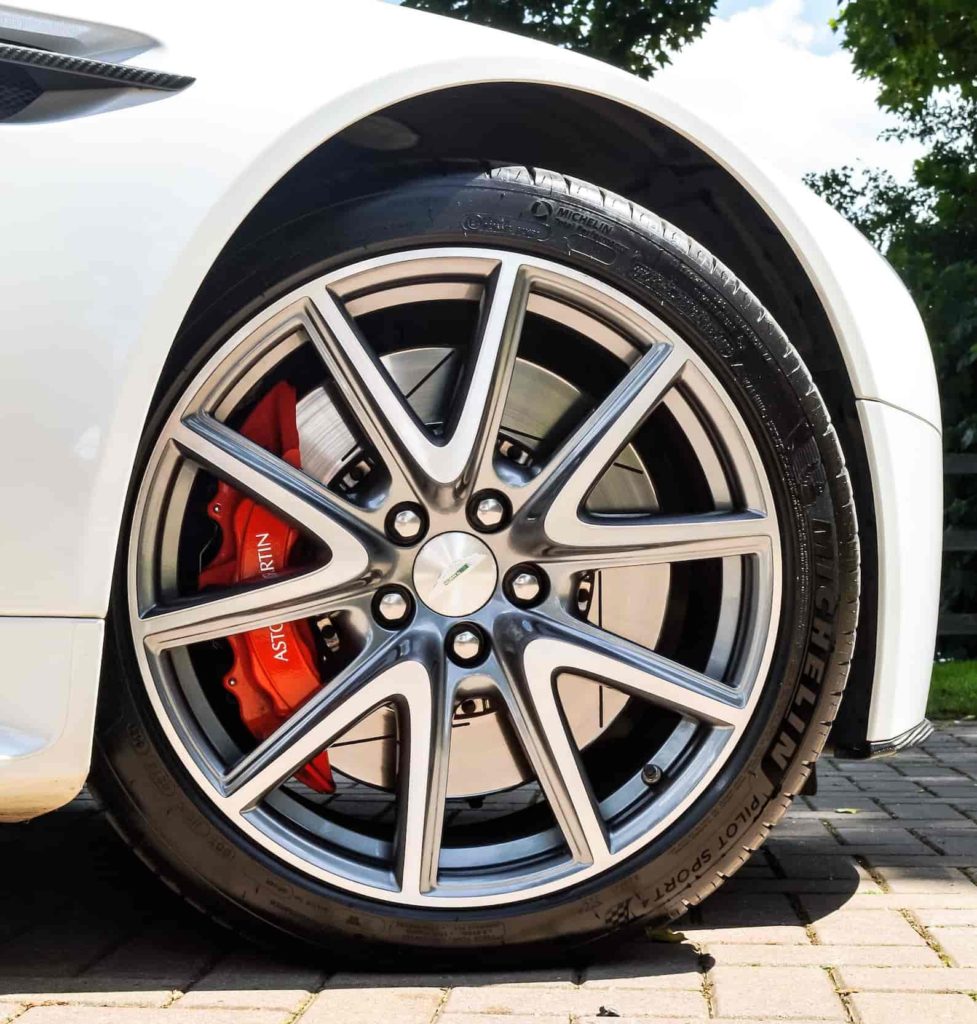Introduction
The automotive industry has always been characterized by its relentless pursuit of innovation and the quest for superior performance. From the early days of motorized transportation to the present, car manufacturers have consistently pushed boundaries to create vehicles that deliver exhilarating experiences on the road.
With advancements in technology, materials, and engineering techniques, one such revolutionary development has emerged – carbon fiber wheels. Carbon fiber wheels mark a paradigm shift in automotive technology.
These wheels are fabricated using carbon composite materials renowned for their exceptional strength-to-weight ratio. This breakthrough in wheel construction offers numerous advantages over traditional aluminum or steel options, revolutionizing the driving experience while simultaneously addressing key challenges faced by auto enthusiasts and manufacturers alike.
The Incessant Drive for Innovation
Innovation lies at the heart of the automotive industry’s commitment to progress. Automakers constantly strive to outdo themselves by introducing cutting-edge technologies that push vehicles to new limits.
This drive is fueled by both consumer demand for heightened performance and regulatory pressures for enhanced fuel efficiency and reduced emissions. Cars have evolved from mere modes of transportation into complex machines designed to delight drivers with their power, agility, and responsiveness.
Over time, engineers have explored various avenues to maximize these aspects without compromising safety or comfort. Carbon fiber wheels represent a significant leap forward in this pursuit.
Carbon Fiber Wheels: A Revolutionary Advancement
Carbon fiber wheels embody a true revolution in automotive design and engineering practices. These lightweight wonders are crafted using advanced composite materials composed primarily of carbon fibers infused with resin matrices.
The result is an incredibly sturdy yet remarkably light wheel that outperforms its conventional counterparts in multiple ways. By adopting carbon fiber wheels, automakers have unlocked a multitude of benefits that enhance both the performance and sustainability aspects of modern vehicles.
As we delve into the following sections, we will explore in detail the advantages offered by carbon fiber wheels. From the weight reduction that enhances performance and fuel efficiency to their superior strength, improved heat dissipation, and aerodynamic properties – these wheels redefine what is possible in the automotive realm.
Lightweight Construction: Exceptional Strength-to-Weight Ratio
One of the most prominent advantages of carbon fiber wheels is their lightweight construction, which stems from the extraordinary strength-to-weight ratio of carbon fiber material. Carbon fiber composites are incredibly strong, rivaling the strength of traditional materials like steel or aluminum alloys while weighing significantly less.
This unique characteristic allows automotive manufacturers to reduce weight without compromising structural integrity. Compared to traditional aluminum wheels, carbon fiber wheels offer a substantial weight reduction.
Aluminum wheels, although widely used in the automotive industry, can be relatively heavy due to the nature of the material. In contrast, carbon fiber’s exceptional properties make it possible to create wheels that are up to 40% lighter than their aluminum counterparts.
By reducing unsprung mass, which includes components not supported by suspension (e.g., wheels and brakes), carbon fiber wheels contribute to enhanced performance and handling. The reduced weight allows for improved acceleration as less power is required to propel a lighter vehicle forward.
Furthermore, braking capabilities are enhanced as lighter wheels provide better stopping power due to reduced inertia. Additionally cornering becomes more agile and responsive with decreased forces acting on the wheel’s suspension system.
Enhanced Performance and Handling: Rotational Inertia
In addition to reducing unsprung mass, carbon fiber wheels also offer another advantage for performance and handling – reduced rotational inertia. Rotational inertia refers to an object’s resistance to changes in its rotational motion caused by its distribution of mass.
With their lightweight construction, carbon fiber wheels have lower rotational inertia compared to conventional alternatives such as steel or aluminum alloy wheels. This lower rotational inertia means that less energy is required for a wheel fitted with carbon fiber rims and spokes to accelerate or decelerate during driving maneuvers.
The result? Increased responsiveness when steering as the wheels can quickly respond to driver inputs. This enhanced agility leads to a more engaging driving experience making it easier to navigate tight corners or swiftly change lanes. The reduced rotational inertia also contributes to smoother vehicle operation overall.
Improved Fuel Efficiency and Reduced Emissions
The benefits of carbon fiber wheels extend beyond performance enhancements; they also contribute to improved fuel efficiency and reduced emissions. The lighter weight of carbon fiber wheels plays a crucial role in achieving these objectives.
By reducing the weight of the wheels themselves, carbon fiber technology helps lower the overall vehicle weight. As a result the engine has less mass to propel forward, leading to improved fuel economy. Lighter vehicles require less energy consumption during acceleration and maintain their momentum with ease.
Carbon fiber wheels also offer reduced rolling resistance compared to conventional alternatives, further enhancing fuel efficiency. Rolling resistance refers to the energy required for a tire/wheel combination to overcome friction while rolling on a surface. The lower rolling resistance of carbon fiber wheels allows for more efficient use of engine power and decreases energy wastage.
Lower energy consumption directly translates into reduced CO2 emissions produced by vehicles equipped with lightweight carbon fiber wheels. With environmental concerns becoming increasingly critical in today’s world, this advantage aligns well with efforts towards sustainability in the automotive industry.
The Power of Carbon Fiber
Strength and Durability
When it comes to strength and durability, carbon fiber truly reigns supreme. This advanced material exhibits exceptional tensile strength, surpassing that of traditional materials like steel or aluminum alloys.
In fact carbon fiber can handle up to five times the amount of stress as steel without succumbing to deformation or structural compromise. This remarkable characteristic translates into wheels that can withstand high-performance demands and harsh road conditions with ease.
Carbon fiber wheels also possess an inherent resistance to corrosion, rust, and fatigue, all thanks to the absence of metallic components in their construction. While metal wheels are susceptible to corrosion over time due to exposure to moisture and other environmental factors, carbon fiber remains resilient. The absence of metallic elements eliminates the risk of rust forming on the surface of the wheels. It is this superior durability that ensures a prolonged lifespan for carbon fiber wheels compared to their metal counterparts.
Heat Dissipation
Carbon fiber’s outstanding ability to dissipate heat efficiently sets it apart from traditional metal wheels. As a composite material with excellent thermal conductivity properties, carbon fiber effectively conducts heat away from braking systems during intense driving situations. This results in noticeably reduced brake fade – a phenomenon where repeated or prolonged braking causes a decrease in stopping power due to excessive heat buildup.
By effectively managing heat transfer away from the brakes, carbon fiber wheels help maintain consistent braking performance even under demanding conditions such as spirited driving or track use. Thus, drivers can experience enhanced confidence and reliability when tackling challenging terrain or engaging in high-performance driving experiences.
Aerodynamics
One of the most striking advantages of carbon fiber wheels lies in their ability to facilitate streamlined designs that reduce drag coefficient and enhance overall aerodynamic performance. The inherent flexibility of carbon fiber allows for complex shapes and forms that can be precisely tailored to optimize airflow around the wheels.
This translates into reduced air resistance, resulting in improved fuel efficiency and higher top speeds. The lighter weight of carbon fiber wheels contributes to improved stability at high speeds by reducing turbulence caused by rotating mass.
This not only enhances straight-line stability but also aids in maintaining control during aggressive cornering maneuvers. The result is a driving experience characterized by enhanced precision, responsiveness, and a heightened sense of confidence behind the wheel.
Ride Comfort
Carbon fiber’s inherent damping properties elevate ride comfort to new heights when compared to metal wheels. Thanks to its composite structure, carbon fiber possesses natural vibration-absorbing qualities that help dampen road imperfections and vibrations transmitted through the wheels. As a result, occupants enjoy a smoother ride experience with reduced harshness and noise intrusion.
By minimizing road-induced vibrations, carbon fiber wheels enhance overall driving pleasure while also reducing driver fatigue on longer journeys. Whether cruising on rough roads or encountering minor potholes, passengers can relish in an exceptionally comfortable ride that provides a sense of luxury seldom found with traditional metal wheels.
The Manufacturing Process
Carbon fiber wheels are meticulously crafted using cutting-edge technology and precise manufacturing processes. Two key techniques employed in the production of these wheels are Tailored Fiber Placement (TFP) and resin transfer molding (RTM). TFP is a method that allows for the strategic arrangement of carbon fibers by precisely placing them in specific orientations and patterns to optimize their strength and stiffness.
This technique ensures that the fibers are laid down in areas where they will bear the maximum load, thus enhancing overall wheel performance. It enables manufacturers to tailor the thickness and density of carbon fiber layers according to specific design requirements resulting in a lightweight yet durable product.
Complementing TFP is the resin transfer molding process, which involves infusing liquid resin into pre-formed carbon fiber layers. This technique ensures that each layer is adequately impregnated with resin, facilitating proper bonding between fibers and imparting structural integrity to the wheel.
The selection of an appropriate resin system is crucial as it determines not only the mechanical properties but also other critical characteristics such as heat resistance, chemical compatibility, and overall aesthetics.
This begins with laying up several plies of carbon fiber material on a mold or mandrel in accordance with a predetermined pattern. Once this step is completed, a vacuum bag is applied over the layup to ensure even pressure distribution during RTM. The vacuum bagging process assists in removing entrapped air from within the layup while facilitating efficient resin flow during infusion.
Afterwards, through carefully controlled temperature and pressure cycles, the liquid resin penetrates and fills all interstices within the carbon fiber layers. This infusion process eliminates any voids or gaps that may compromise structural integrity or induce weakness within the finished wheel.
Once cured inside an autoclave or oven under specific temperature conditions tailored for optimal material property development, the now-solidified composite structure is demolded from its form. This step marks an essential transition point from a collection of raw materials to a fully-formed carbon fiber wheel, ready for further finishing processes.
The process concludes with precision machining which involves cutting and drilling the composite structure to achieve the desired final shape and dimensions. During this stage any excess material is removed and mounting points for tire valve stems or brake discs are incorporated as required.
The manufacturing process of carbon fiber wheels is a multifaceted endeavor that combines advanced techniques like TFP and RTM. These processes ensure that each wheel is meticulously crafted to harness the exceptional characteristics of carbon fiber material while meeting the exacting standards of performance and quality demanded by automotive enthusiasts and professionals alike.
The Future of Carbon Fiber Wheels
With their exceptional strength-to-weight ratio and advanced manufacturing processes, carbon fiber wheels hold enormous potential for revolutionizing not only the automotive industry but also various aerospace applications. As technology continues to advance, it is anticipated that carbon fiber wheels will play an increasingly significant role in these sectors.
One area where carbon fiber wheels are expected to make a substantial impact is motorsports. The quest for higher speeds and better performance has always been a driving force behind technological advancements in racing. Carbon fiber wheels offer the advantage of reduced rotational mass, which directly translates into improved acceleration and braking capabilities. As racing teams strive to shave off crucial milliseconds on the track, it is likely that carbon fiber wheels will become the go-to choice for professional racers.
Furthermore as electric vehicles (EVs) gain popularity and become more mainstream, manufacturers are looking for ways to increase their battery efficiency and extend their range. The lightweight nature of carbon fiber wheels contributes significantly to reducing energy consumption by lowering overall vehicle weight. By incorporating carbon fiber wheels into EV designs, automakers can enhance energy efficiency while simultaneously improving handling and ride comfort.
Conclusion
Carbon fiber wheels have revolutionized the automotive industry with their extensive advantages over traditional metal wheels. From providing superior strength and durability to efficient heat dissipation, enhanced aerodynamics, and unmatched ride comfort, carbon fiber wheels have set new standards in performance and luxury.
Embracing the possibilities brought forth by carbon fiber technology allows drivers to unleash the full potential of their vehicles while enjoying a smoother, more exhilarating driving experience. With the revolution of carbon fiber wheels, a world of exceptional performance awaits those who seek the pinnacle of automotive excellence.





